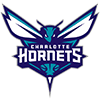Among the women we celebrated on International Women's Day (Friday, March 8) are past, present, and future pioneers of women's sports. These pioneers have helped make athletics a viable career choice for women around the world, paving the way for females to succeed in a historically male-dominated field. Though women's sports worldwide still lag in popularity relative to their men's counterparts, the wage gap between men and women has steadily declined in recent years. Below, we'll spotlight which sports have been most progressive when it comes to women's wages while highlighting some individuals who have spearheaded women's financial success in sports, as well as some of the present and future faces of women's athletics.
Tennis
Tennis has historically been at the forefront of female athlete progress, and the 2023 US Open celebrated the tournament's 50th anniversary of becoming the first Grand Slam to pay men and women equally. The Australian Open has been doing so since 2001, and the French Open and Wimbledon followed suit in 2007, so all four majors have had equal pay between the genders for a while now. There is still a gender pay gap between men and women overall, as not all tournaments have followed in the footsteps of the four majors. Top men's tennis players earn about 1.4 times as much money as top women's players overall, but that's a far cry from the pay gaps found in most other major sports. The Women's Tennis Association hopes to eliminate the gap entirely by 2033.
It's no surprise tennis has produced some of the top role models for female athletes, both at home and abroad. Billie Jean King's fight for pay equality 50 years ago helped set the stage for the subsequent success of stars from across the world such as Li Na of China (Asia's first Grand Slam champion), Ons Jabeur of Tunisia (the first Arab player to be ranked top-10 and the highest-ranked African player ever at No. 2) and 23-time Grand Slam champion Serena Williams of the United States. Williams is the highest-earning woman athlete of all time, with just under $95 million in career prize money. Only Novak Djokovic ($185 million), Rafael Nadal ($134 million), and Roger Federer ($130 million) have made more among tennis players from either gender, with Andy Murray ($64 million) a distant fifth on tennis' all-time earnings list.
Soccer
The total prize money given out at the 2023 FIFA Women's World Cup was $152 million, which was almost three times less than the $440 million purse for the men at the 2022 FIFA World Cup, but also over five times more than the $30 million from the 2019 women's World Cup. The 2022 World Cup Final was watched by 1.5 billion people worldwide, and an estimated 5.0 billion people around the world watched at least some of the men's competition. The women's competition saw not only a massive increase in pay compared to 2019 but also a substantial bump in viewership. The 2019 women's World Cup got 1.1 billion viewers globally, with 82 million for the final, while total viewership in 2023 crossed 2.0 billion. Crude math puts the men's purse at 8.8 cents per viewer in 2022, while women got 7.5 cents per viewer in 2023, a relatively modest difference of 17 percent in the men's favor.
The popularity of the 2023 FIFA Women's World Cup came on the heels of a 2022 settlement of a discrimination lawsuit by US Women's National Team members Carli Lloyd, Hope Solo, Alex Morgan, Megan Rapinoe, and Becky Sauerbrunn. The lawsuit led to a historic agreement that resulted in equal pay for the US men's and women's soccer teams through at least 2028, as well as $22 million in back pay for the American women's team. Team USA lost the battle at the 2023 World Cup, crashing out in the Round of 16 after winning the previous two women's World Cups, but its members are winning the war for equal pay. Present and future USWNT stars such as Sophia Smith and Naomi Girma, as well as international stars such as Spain's Aitana Bonmati, are set to reap the monetary benefits brought on by the hard work and trailblazing of Lloyd and Co.
NCAA
Many athletes make the majority of their income in endorsements rather than on the field or court. The advent of NIL (Name, Image, Likeness) partnerships has opened the door for college athletes to get paid through marketing and promotional endeavors. Some female NCAA athletes have parlayed their success into seven-figure NIL deals, led by Olivia "Livvy" Dunne ($3.5 million). Gymnastics isn't top of mind for many sports fans except when the summer Olympics come around quadrennially, and Dunne doesn't project to be an Olympic-level gymnast, but her popularity on TikTok and marketable mix of personality and athleticism have helped her reach marketing deals with fashion brands such as American Eagle and Forever 21. Thanks to those partnerships, she's the third-highest-paid college athlete in terms of NIL money, trailing only Bronny James ($5 million) and Shedeur Sanders ($4.7 million), both of whom benefit from being the offspring of legendary athletes. The NIL top-10 list also includes women's college basketball stars Caitlin Clark ($3.1 million) and Angel Reese ($1.7 million).
Basketball
Going from an unsalaried college player to a WNBA rookie salary won't make a significant monetary difference for Clark, but she's one of the few female basketball players with enough star power to make a seven-figure annual salary off endorsements, as evidenced by her current NIL valuation. Even before breaking Pete Maravich's record for the most points scored in a Division I NCAA Basketball career, the University of Iowa star had grown into one of the most recognizable names in women's sports. Unfortunately, Clark plays a sport in which women haven't made much progress in closing the wage gap.
If selected first overall in the 2024 WNBA Draft as expected, Clark would be slated to earn a $76,000 salary in her rookie year, with a chance at another $8,000 or so in incentives. The WNBA's highest-paid players make $242,000, while the league minimum is set at $62,000, and players with at least three years of experience can't earn less than $74,305. The NBA veteran minimum is around $1.1 million, about 140 times the WNBA vet minimum, while Stephen Curry's nearly $52 million salary is over 210 times the highest WNBA salary.
The difference in revenue between the NBA and WNBA is staggering – $10 billion for the NBA versus $60 million for the WNBA. By those metrics, Curry's salary is 0.5% of the league's total revenue while the top WNBA salaries are 0.4% of their league's revenue, and WNBA minimum salaries are actually higher as a percentage of league revenue. In other words, for women's basketball players to close the massive NBA-WNBA pay gap, they need to put more butts in seats and TVs on screen with their play. Sabrina Ionescu's strong performance in a 3-point contest loss to Curry at the 2024 NBA All-Star Game showed that the top women can shoot just as well, but the WNBA lacks the prolific dunks and blocks that go viral and litter NBA highlight reels. Perhaps the next generation of WNBA stars like Clark and Reese will help usher in a more exciting era of women's basketball and attract new viewers.
State of Women's Sports
Not everyone believes the wage gap in professional sports is a problem that needs solving, but it only makes sense for sports fans to root for the continued growth of sports' popularity at all levels, be it men's, women's, youth, etc. Top female athletes are the best performers among their peers, just as the top men are the best among theirs. In track and field, the shot put (16 lbs for men and 8.8 for women, respectively) is far heavier than the javelin (1.8 and 1.3 pounds, respectively), but javelin throwers aren't looked down upon for throwing a lighter object. Just as sports fans don't begrudge other fans for preferring to watch Carlos Alcaraz or LeBron James over Jannik Sinner or Nikola Jokic, they should be understanding of those who would pick Iga Swiatek or Caitlin Clark over any of those men, even if Swiatek doesn't get quite as many miles per hour on the serve and Clark's basketball is a couple of inches smaller. Ultimately, the business aspect of professional sports usually dictates the pay gaps – more viewers means more money and a rising tide lifts all boats. If WNBA viewership and salaries doubled overnight, it wouldn't hurt the NBA.
To steal a line from a recent speech Americans may have heard, the state of women's sports is strong and getting stronger! The push to close gender pay gaps is gaining steam, and there are more sponsorship opportunities for female athletes than ever, especially with the advent of NIL deals for college athletes. It's a great time to be a female athlete, and things are only getting better. Interestingly, while the US has been a world leader in championing equal pay on the international stage in tennis and soccer, the appetite from American viewers hasn't been there for domestic women's sports leagues such as the WNBA. Fans of women's sports can help be the change they want to see in the world and support female athletes by watching games live or on TV, as well as buying merchandise. You don't have to be the next Billie Jean King or Carli Lloyd to help empower female athletes to chase their dreams and get paid well for realizing them.






















